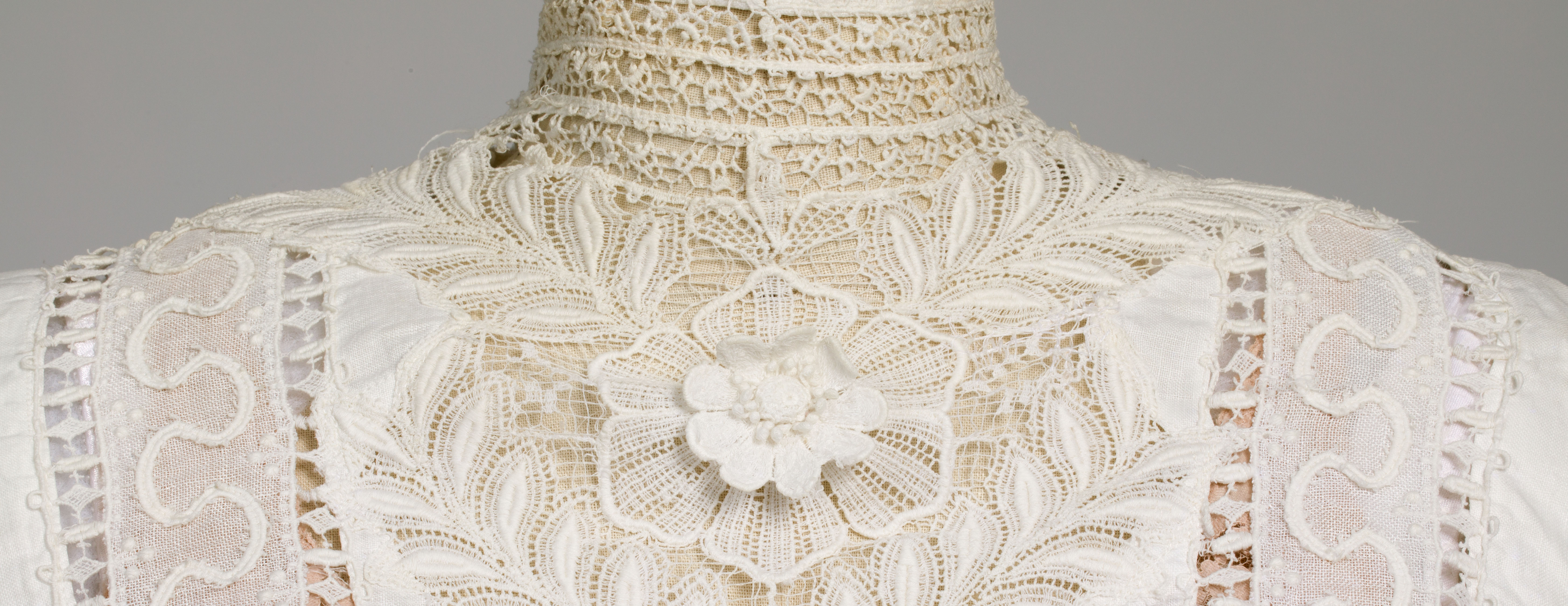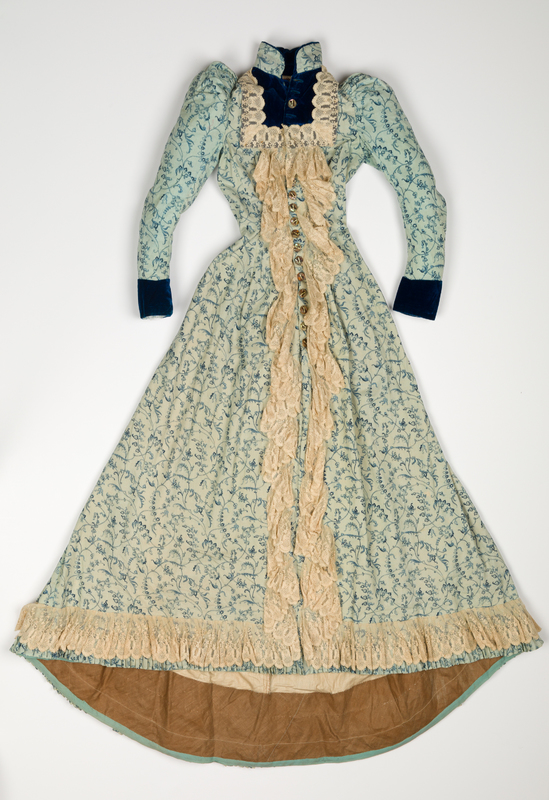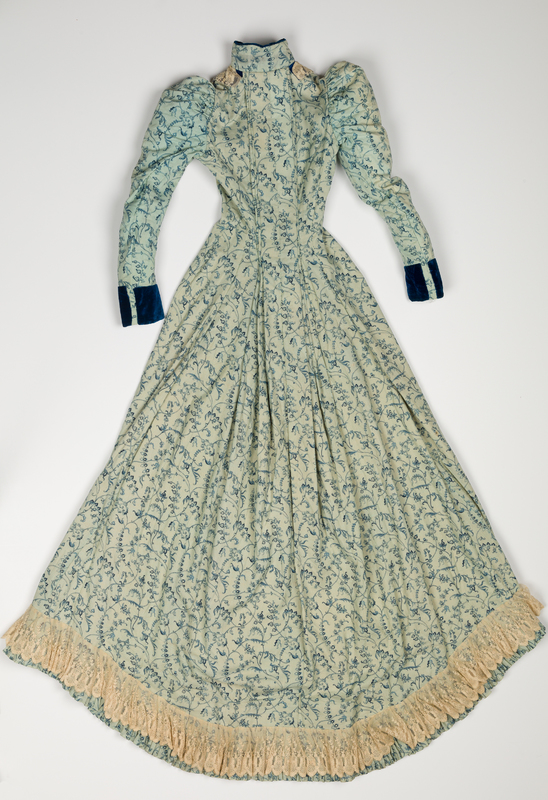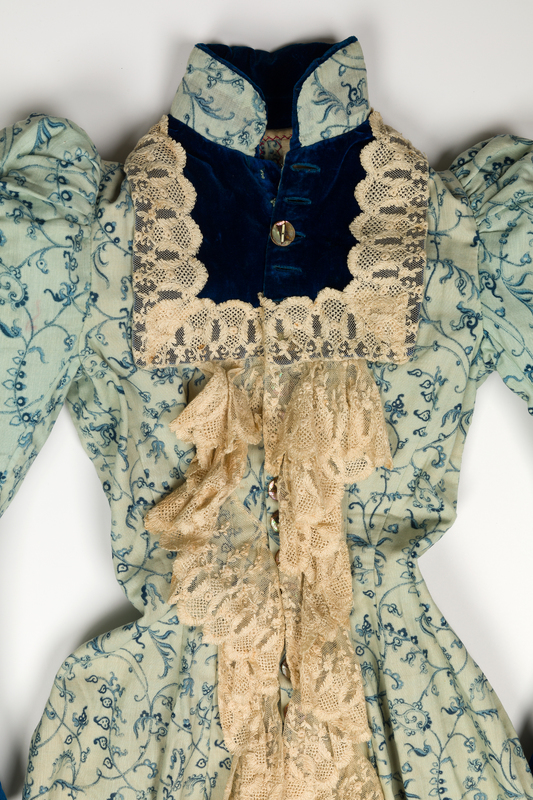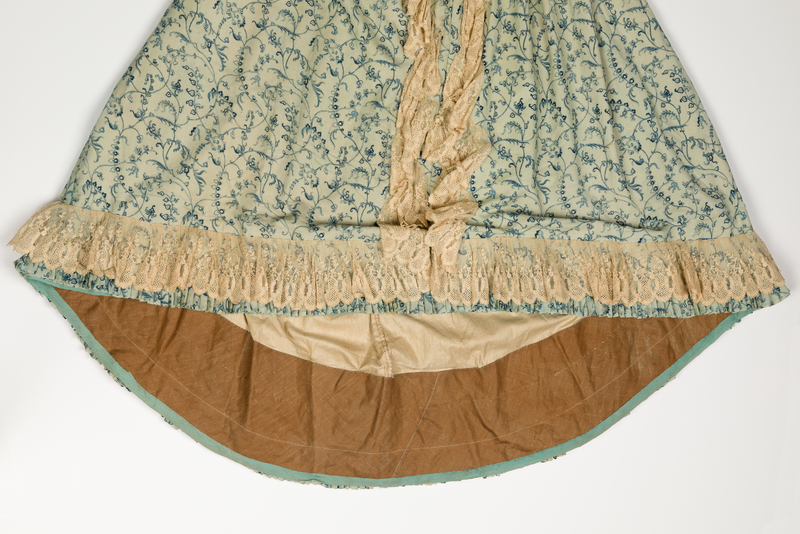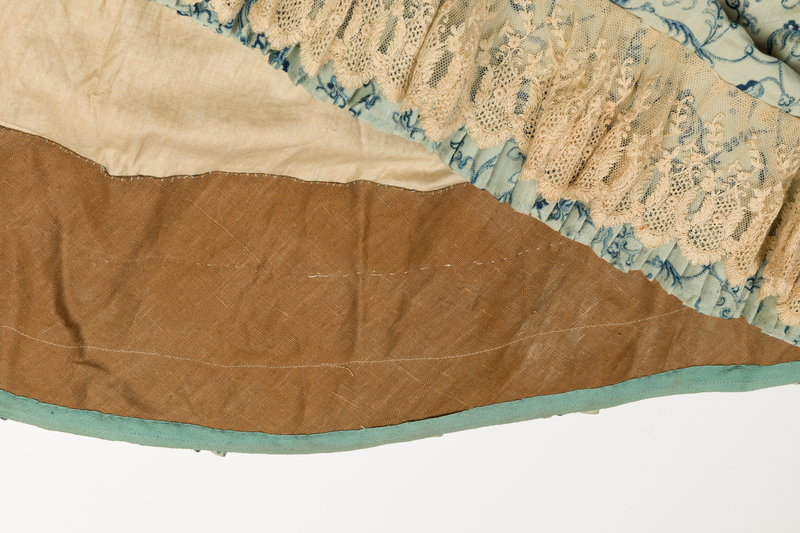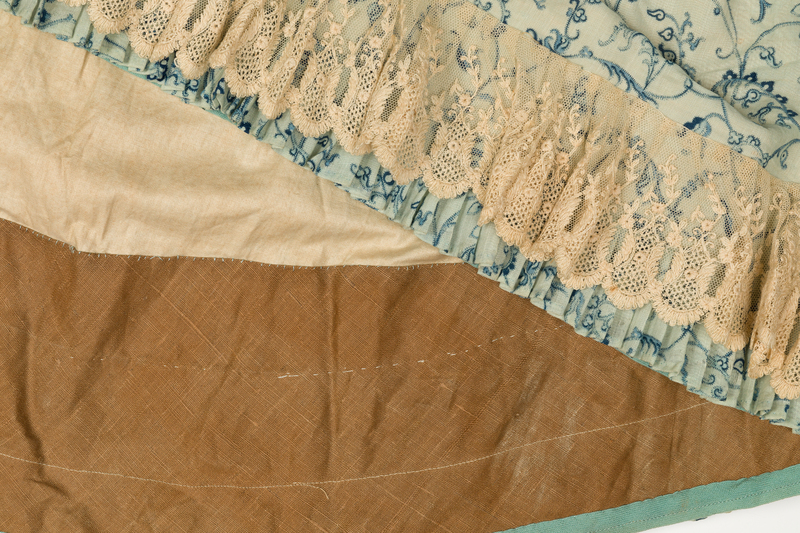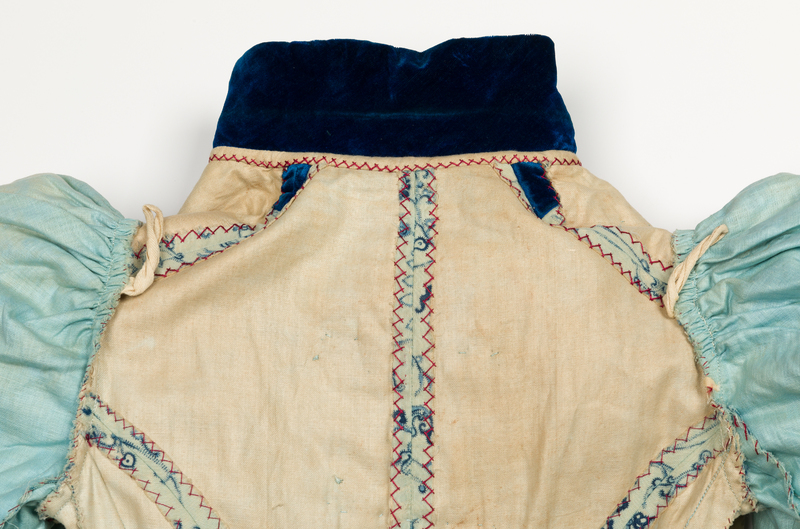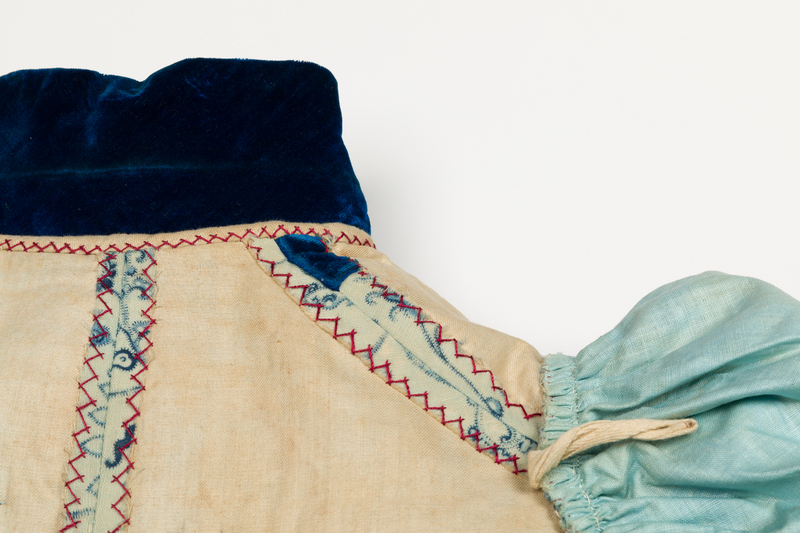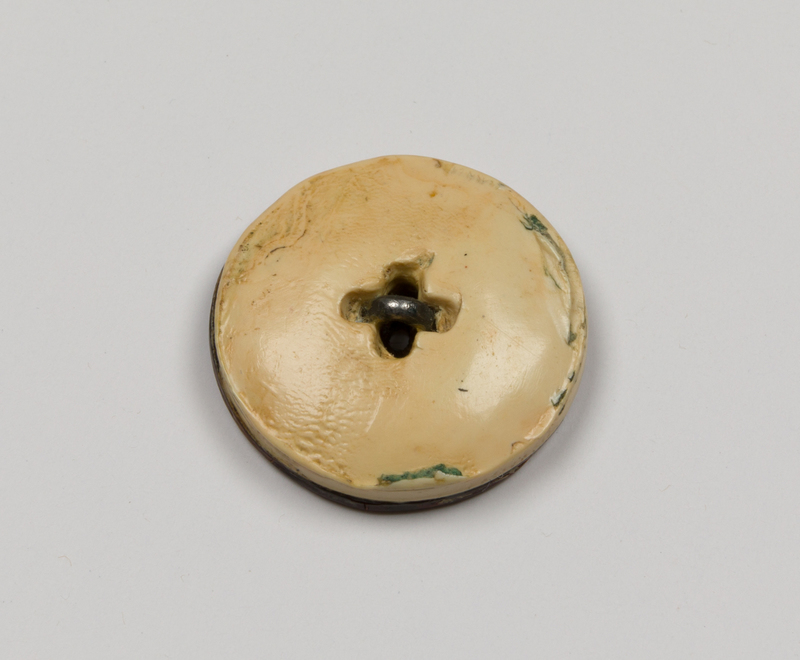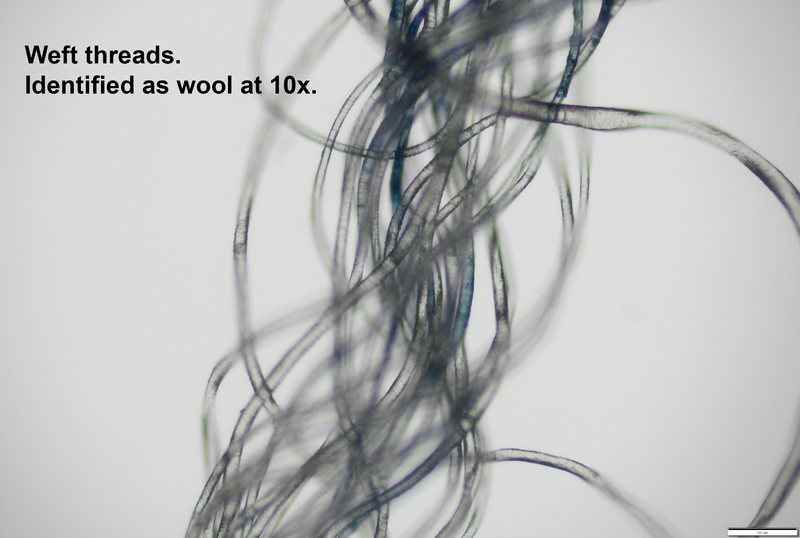Wrapper
Dress
circa 1890-1894
Blue; Green
Silk/Silk velvet. Wool.
2013.01
Like other types of house dresses, this wrapper was exclusively worn indoors and in the privacy of one’s home over undergarments. The wrapper was often less formal and with fewer trimmings than an afternoon or walking dress.
This particular wool wrapper dates to the early 1890s, before the rise of the fuller "leg of mutton" sleeve. The 2-piece sleeve is set high onto the shoulder with a full gathered cap, fitted through the arm and has an applied blue silk velvet cuff. Silk velvet is also applied as a false front yoke and inside the stand collar. The center front opens with buttons and extends just below the waist. The buttons are a composite of materials. The base layer is made of celluloid with a small metal shank to allow it to be sewn to the dress. The top of the button is carved mother of pearl and ivory inset into resin. Lace edges the yoke, then continues down the center front in a zigzag pattern. The same lace is also applied at the hem of the dress. This princess line dress has a distinct feel of Rocco Rival with the back of the garment pleated into a Watteau back that fans out at the high hip to create a bell-shaped silhouette. The interior of the garment is lined with muslin and contains a waist tape, horsehair kicker at the hem, and the seams are hand finished with red thread.
Similar examples of this style can be found in the early 1890’s editions of The Delineator. In this particular example there is a very similar overall design notably in the sleave silhouette, Watteau train, printed fabric, and ruffled hem (example 1).
-Coberly
References
“The Delineator. Box 3 V.40 No.1-2,4-6 1892 Inc.” n.d. HathiTrust. Accessed July 26, 2023. https://hdl.handle.net/2027/coo1.ark:/13960/t9q31h68z?urlappend=%3Bseq=156.
“The Delineator. Box 3 V.40 No.1-2,4-6 1892 Inc.” n.d. HathiTrust. Accessed July 26, 2023. https://hdl.handle.net/2027/coo1.ark:/13960/t9q31h68z?urlappend=%3Bseq=254.
